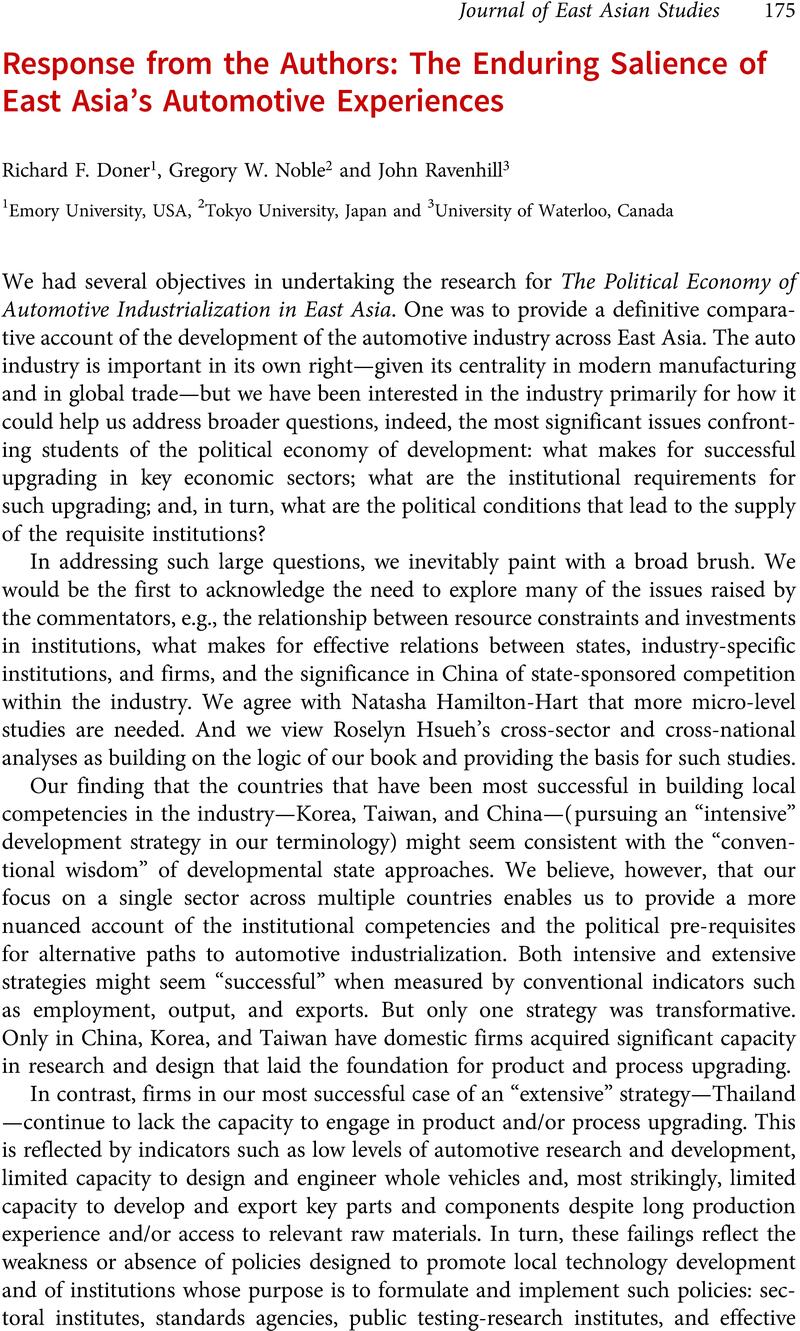No CrossRef data available.
Article contents
Response from the Authors: The Enduring Salience of East Asia's Automotive Experiences - Roundtable on Rick Doner, Gregory Noble, and John Ravenhill, The Political Economy of Automotive Industrialization in East Asia
Review products
Roundtable on Rick Doner, Gregory Noble, and John Ravenhill, The Political Economy of Automotive Industrialization in East Asia
Published online by Cambridge University Press: 27 February 2023
Abstract
An abstract is not available for this content so a preview has been provided. Please use the Get access link above for information on how to access this content.

- Type
- Book Review Roundtable
- Information
- Copyright
- Copyright © The Author(s), 2023. Published by Cambridge University Press on behalf of the East Asia Institute
References
Rizqui, Hafizh. 2021. “Tesla Reliability: One of the Least Reliable Cars?” Motor Verso November 24, www.motorverso.com/tesla-reliability/ accessed 29 June 2022.Google Scholar



